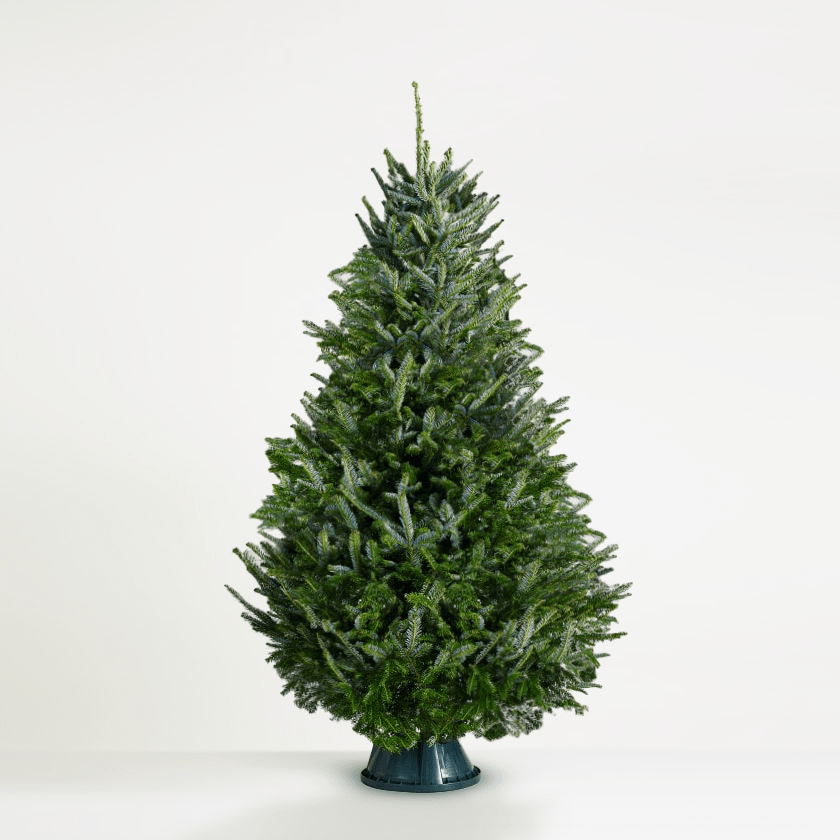The Christmas tree, decorated and glowing, holds a special place in our hearts during the festive season. Every ornament, ribbon, and light can add a unique touch to our Christmas trees, often with symbolism stretching back centuries. Understanding the history and meaning behind these decorations allows us to enjoy an even deeper connection to this cherished holiday tradition.
If you’re decorating a beautiful, freshly cut Nordmann fir this season, perhaps even sourced from a local delivery in London, each decoration can help you tell a story and celebrate the essence of Christmas in your home. Here, we’ll explore the symbolism behind some of the most common Christmas tree decorations and the meaning they bring to our celebrations.
The Symbolism Behind Christmas Tree Decorations
Christmas tree decorating is a cherished tradition that brings families and friends together each year. While ornaments, lights, and other decorations may vary from home to home, many of these holiday decorations hold deeper meanings that have developed over centuries. Adding decorations to a beautiful, freshly cut tree, from a local delivery in London service, allows us to celebrate these traditions and add a sense of meaning and nostalgia to our homes.
For those who opt for the Nordmann fir, one of the most popular Christmas trees for its durability and soft needles, each ornament placed on the branches can represent a unique piece of Christmas history. In this guide, we’ll explore the symbolism behind common Christmas tree decorations and how they can enrich your holiday season.
1. The Everlasting Symbol of the Christmas Tree
The Christmas tree itself is deeply symbolic. Evergreens remain lush and green throughout winter, symbolising life, hope, and resilience. In centuries past, people would bring evergreens into their homes to remind them that life persists even through the darkest, coldest times. Today, the Nordmann fir is a popular choice for this tradition, particularly in London where delivery services make it easy for families to enjoy a fresh tree without the hassle of transporting it home.
With Nordmann fir delivery in London, you can enjoy a full, beautiful tree that serves as the perfect base for meaningful decorations, blending holiday tradition with the convenience of modern services.
2. The Classic Bauble Ornaments
Traditional round baubles have become a staple of Christmas tree decorations, but their origins stretch back hundreds of years. In earlier times, people would use apples to decorate trees, representing the Tree of Knowledge from the Garden of Eden. Eventually, glassmakers in Germany began to craft glass balls to replace apples, leading to the classic Christmas bauble we know today.
Baubles are typically round, symbolising eternity and unity. Today, they come in a wide variety of colours, each carrying its own unique symbolism:
- Red baubles represent love and the sacrifice of Jesus.
- Gold baubles symbolise wealth, light, and divinity.
- Silver suggests purity and peace.
- Green reflects nature, life, and the evergreen tree itself.
When you adorn a full, beautiful tree with colourful baubles, you can create a stunning display of traditional symbolism and personal meaning, enhanced by the tree’s naturally lush branches.
3. Stars and Angels
The star is one of the most iconic symbols of Christmas, often placed at the top of the tree as a shining beacon. This tradition honours the Star of Bethlehem, which guided the wise men to Jesus. The star represents guidance, hope, and faith, serving as a reminder of the miracle of Christmas.
An angel is another popular topper, representing the angels who announced the birth of Jesus in the Nativity story. Angels symbolise peace, love, and divine protection, making them an ideal addition to any Christmas tree.
Whether you choose a star, an angel, or another meaningful topper, these decorations add a layer of significance to your tree, which you can enjoy all season long with the convenience of Nordmann fir delivery in London.
4. Lights and Candles
Christmas tree lights are a magical part of any decorated tree, creating a warm, cosy atmosphere and bringing the tree to life. The tradition of lighting the tree dates back to when people placed candles on trees to symbolise Jesus as the Light of the World.
Today’s electric lights are safer and allow us to create different moods with a range of colours, from classic white lights that symbolise purity and peace to colourful lights that add a playful, joyous energy to the display. Each twinkle brings warmth and a sense of celebration, honouring both the history of the holiday and the joy it brings to all who celebrate.
5. Bells and Chimes
Bells are commonly associated with Christmas and are often used to decorate trees. In Christian tradition, bells rang out to announce the arrival of Christmas, calling people to gather and celebrate. They were also believed to ward off evil spirits, symbolising protection and joy.
When hung on the Christmas tree, bells serve as a call to celebration and a reminder of the festive cheer that defines the season. Each chime represents hope, new beginnings, and the harmonious sound of goodwill among people.
6. Ribbons and Bows
Ribbons are often used to tie ornaments, weave through branches, or even form bows that sit atop the tree. These decorations represent unity and the bonds of love that tie families and friends together. In a season that celebrates togetherness, ribbons symbolise the beauty of connection and the joy of sharing time with loved ones.
Bows on a tree add elegance and charm, bringing a sense of completeness and wholeness to the Christmas tree’s overall look. They remind us to cherish the relationships we have and the memories we create during this special time of year.
7. Candy Canes
Candy canes, with their distinctive red-and-white stripes, are more than just sweet treats; they also hold symbolic meaning. Their cane shape is said to represent the shepherds' crooks, connecting to the shepherds who visited Jesus after his birth. The red represents Christ’s sacrifice, while the white symbolises his purity.
Hanging candy canes on the tree is a delightful way to combine festive fun with a symbol of goodwill and tradition. Many people include candy canes as ornaments on their Nordmann firs, adding both colour and meaning to the tree’s overall look.
8. Nutcrackers and Soldiers
Nutcracker figures, soldiers, and other festive figurines add a playful touch to the Christmas tree. Originating in Germany, nutcrackers were given as tokens of protection, believed to ward off evil spirits and bring good luck to a household.
Today, nutcrackers represent strength, courage, and a sense of holiday magic. Adding a few to your Christmas tree, particularly a sturdy, full Nordmann fir, enhances the tree’s story and reflects the courage and resilience that define the Christmas season.
9. Snowflakes and Pinecones
Snowflake ornaments capture the beauty of winter, symbolising purity, individuality, and the wonder of nature. Each snowflake is unique, reminding us of the beauty in diversity and the marvel of creation.
Pinecones, on the other hand, represent life, rebirth, and the continuity of nature. They’re particularly fitting for an evergreen tree like the Nordmann fir, which itself symbolises resilience and life throughout winter.
Embracing Tradition with a Nordmann Fir Tree
Each decoration on your Christmas tree can carry a beautiful meaning, helping to create a rich, layered experience in your home. If you’re in London, opting for Nordmann fir delivery in London ensures you receive a fresh, resilient tree, perfect for holding cherished ornaments and celebrating these age-old symbols.
As you decorate, think about the meanings behind each ornament, and use this tradition to share stories with family, honour memories, and embrace the spirit of Christmas in a deeply personal way. Whether you’re adding stars, lights, or a simple red bauble, each piece tells a story, connecting the past, present, and future in the magic of the season.

 GOOGLE REVIEWS
GOOGLE REVIEWS 
